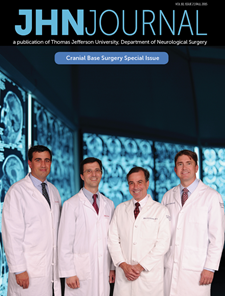Abstract
Trigeminal neuralgia (TN) is a chronic, progressive facial pain disorder characterized by severe paroxysmal episodes in the distribution of the trigeminal nerve. The most common cause of (TN) is compression of the trigeminal nerve by a vascular structure within the posterior fossa at the dorsal root entry zone (DREZ). Initially described by Dr. Peter Janetta, microvascular decompression has been clearly demonstrated to be a safe and effective treatment for TN with excellent immediate and long-term pain relief.1
Although neuroimaging has advanced significantly allowing for improved pre-operative visualization of the trigeminal nerve and determination of vascular conflict, most neurosurgeons continue to practice the MVD procedure in a very similar manner to Dr. Janetta’s 1967 description.2 While the retrosigmoid craniotomy and operative microscope allows for an excellent view of the posterior aspect of the trigeminal nerve within the cerebellopontine angle, visualization of the anterior aspect of the nerve is limited. Additionally, adequate visualization of the DREZ may be difficult and require additional retraction of the cerebellum, potentially resulting in complications such as hearing loss and cerebellar injury. As neurosurgical experience with the endoscope has grown, a variety of authors have described performing microvascular decompression with endoscopic assistance which involves using the endoscope to inspect the trigeminal nerve for sites of compression but performing the decompression under the microscope. While the main advantage of the endoscopic approach compared to the microscopic approach is improved visualization of the trigeminal nerve from the DREZ to Meckel’s cave including its inferior, anterior and superior surfaces, evolution of the procedure to a fully endoscopic approach has the additional benefits of being less invasive with minimal soft tissue dissection and cerebellar retraction allowing for reduced patient discomfort and accelerated recovery. In this technical review, we describe our approach to performing a fully endoscopic microvascular decompression including the surgical nuances that allow the procedure to be performed safely and efficiently.
Pages 2-5
Recommended Citation
Farrell, MD, Christopher J; Do, MD, Hyunwoo; Geschwindt, MD, Sonia; and Evans, MD, James J.
(2015)
"Fully Endoscopic Microvascular Decompression for Trigeminal Neuralgia,"
JHN Journal: Vol. 10:
Iss.
2, Article 1.
DOI: https://doi.org/10.29046/JHNJ.010.2.001
Available at:
https://jdc.jefferson.edu/jhnj/vol10/iss2/1

